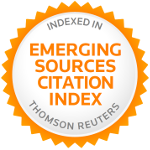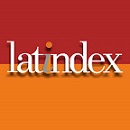Students’ learning performance and acceptance of web 2.0 technologies based on media richness properties
DOI:
https://doi.org/10.46661/ijeri.4269Keywords:
Web 2.0 technologies, media richness, user acceptance, learning performance, higher educationAbstract
The selection of a communication channel for the performance of learning tasks is likely to affect how information and knowledge can be effectively transmitted. Anchored on the media richness theory, this study employed quasi-experimental design to examine the influence of media richness properties on learning performance user acceptance of web 2.0 technologies as learning tools. The quasi-experiment, which took place over eight weeks, was carried out with 100 undergraduate students who were assigned to two experimental groups (Facebook-based learning condition and Blogger-based learning condition) and a control group (paper-based learning condition). A focus group discussion was also done to reveal the participants’ insights after using web 2.0 technologies in performing the assigned learning activities. No significant differences existed among the three learning conditions in terms of learning performance and between the two experimental conditions as regards user acceptance. Such findings indicate that the learning performance achieved from using the learning tools was perceived to be the same regardless of the features they offered. All groups may also have equal perceived level of usefulness and ease of use afforded by the learning mediums despite variations in their features.
Downloads
References
Balaji, M.S., & Chakrabarti, D. (2010). Student interactions in online discussion forum: Empirical research from ‘media richness theory’ perspective. Journal of Interactive Online Learning, 9(1), 1-22.
Basu, A., O’Steen, B., & Allan, M. (2011). Integrating medical education with medical practice: Role of web 2.0 tools. Retrieved from https://pdfs.semanticscholar.org/ffdc/abd069f5acf2def67d5f7efb7a4e885f5e7f.pdf?_ga=2.84463193.1543746134.1561729369-1409743535.1561729369
Blau, I., & Caspi, A. (2008). Do media richness and visual anonymity influence learning? A comparative study using Skype™. Proceeding of the Chais Conference on Instructional Technologies Research, 18-25.
Bradley, J. (2009). The Technology Acceptance Model and Other User Acceptance Theories. Retrieved from http://biblio.uabcs.mx/html/libros/pdf/11/15.pdf
Chuang, T., Bernard, M., & Ali, S.I. (2002). Computer-supported collaborative learning performance and satisfaction: A multi-stage study. Journal of International Information Management, 11(1), 27-41.
Cresswell, J.W. (2012). Educational Research: Planning, Conducting, and Evaluating Quantitative and Qualitative Research (4th ed.). Boston, MA: Pearson Education, Inc.
Daft, R.L. & Lengel, R.H. (1984). Information richness: a new approach to managerial behavior and organizational design. In L.L. Cummings & B.M. Staw (Eds.), Research in Organizational Behavior (pp. 191-233). Retrieved from http://www.dtic.mil/dtic/tr/fulltext/u2/a128980.pdf
Daft, R.L., Lengel, R.H., & Trevino, L.K. (1987). Message equivocality, media selection, and manager performance: Implications for information systems. MIS Quarterly,11(3), 355-366.
Dao, D.V. (2015). Social media classification scheme in online teaching and learning activities: A consideration for educators. Interactional Journal of Education and Social Science, 2(4), 85-94.
Davis, F.D. (1989). Perceived usefulness, perceived ease of use, and user acceptance of information technology. MIS Quarterly, 13(3), 319- 340.
Dennis, A.R. (2009). Media richness theory. In S.W. Littlejohn, & K.A. Foss, Encyclopedia of Communication Theory. Thousand Oaks, CA: SAGE Publications, Inc.
DeSanctis, G., &Monge, P. (1999). Introduction to the special issue: Communication processes for virtual organizations. Organization Science, 10(6), 693-703.
Gliner, J.A., Morgan, G.A., & Leech, Nancy L. (2009). Research methods in applied settings: An Integrated approach to design and analysis (2nd ed.). New York, NY, US: Routledge/Taylor & Francis Group.
Havard, B., Du, J., & Xu, J. (2008). Online collaborative learning and communication media. Journal of Interactive Learning Research, 19(1), 37-50.
Heeren, E., & Lewis, R. (1997). Selecting communication media for distributed communities. Journal of Computer Assisted Learning, 13, 85-98.
Hung, S-Y., Chen, C.C., Hung, H-M., & Ho., W-W. (2013). Critical factors predicting the acceptance of digital museums: User and system perspectives. Journal of Electronic Commerce Research,14(3), 231-243.
Karahanna, E., & Limayem, M. (2000). E-mail and v-mail usage: Generalizing across technologies. Journal of Organizational Computing and Electronic Commerce, 10(1), 49-66.
Kishi, M. (2008). Perceptions and use of electronic media: Testing the relationship between organizational interpretation differences and media richness. Information & Management, 45(5), 281-287
Kitchakarn, O. (2016). How students perceived social media as a learning tool in enhancing their language learning performance. The Turkish Online Journal of Educational Technology, 15(4), 53-60.
Kock, N. (2005). Media richness or media naturalness? The evolution of our biological communication apparatus and its influence on our behavior toward e-communication tools. IEEE Transactions on Professional Communication, 48(2), 117-130. doi:10.1109/TPC.2005.849649
Lee, M.K.O., Cheung, C.M.K. & Chen, Z. (2007). Understanding user acceptance of multimedia messaging services: An empirical study. Journal of the American Society for Information Science and Technology, 58(13), 2066-2077.
Liu, S. H., Liao, H. L., & Pratt, J. A. (2009).Impact of media richness and flow on e-learning technology acceptance. Computer& Education, 52(3), 599-607.
Newman, J.H. (2014). Enhanced teaching and learning in media richness and media synchronicity environments. Computer Science and Information Technology, 2(4), 189-191. doi:10.13189/csit.2014.020401
Roman, M., Popescu, D., & Selisteanu, D. (2013).An Interactive Teaching System for Bond Graph Modeling and Simulation in Bioengineering. Educational Technology & Society, 16(4), 17-31.
Saeed, N., Yang, Y., & Sinnappan, S. (2008). Media richness and user acceptance of Second Life. Proceedings of ASCILITE Conference, 851-860.
Saeed, N., Yang, Y., & Sinnappan, S. (2010) Impact of media richness on user acceptance of blogs and podcasts. Paper presented at the 15th Annual Conference on Innovation and Technology in Computer Science Education (ITiCSE’10), Ankara, Turkey. Retrieved from http://ims.mii.lt/ims/konferenciju_medziaga/ITiCSE'10/docs/p137.pdf
Selwyn, N. (2007). Web 2.0 applications as alternative environments for informal learning — A critical review. Retrieved from Organisation for Economic Co-operation and Development (OECD) website: http://www.oecd.org/edu/ceri/39458556.pdf
Soumplis, A., Koulocheri, E., Kostaras, N., Karousos, N., & Xenos, M. (2011).Learning management systems and learning 2.0. International Journal of Web-Based Learning and Teaching Technologies, 6(4), 1-18.
Sun, P.C., & Cheng, H.J. (2007). The design of instructional multimedia in e-Learning: A media richness theory-based approach. Computers & Education,49, 662–676. doi:10.1016/j.compedu.2005.11.016
Tsadima, K. Vassilopoulou, K. Kavakli, E., & Sofianopoulou, C. (2012, July).Integrating media richness theory and learning styles: A proposed theoretical framework. Paper presented at the 4th International Conference on Education and New Learning Technologies (EDULEARN12), Barcelona, Spain. Retrieved from https://library.iated.org/view/TSADIMA2012INT
Witte, R.S., & Witte, J.S. (2001). Statistics (6th ed.). Orlando, FL: Harcourt College Publishers.
Wong, K., Osman, R.B., Goh, P.S.C., & Rahmat, M.K. (2013).Understanding student teachers’ behavioural intention to use technology: Technology acceptance model (TAM) validation and testing. International Journal of Instruction, 6(1), 89-104.
Wu, P.H., Hwang, G.J., & Tsai, W.H. (2013). An expert system-based context-aware ubiquitous learning approach for conducting science learning activities. Educational Technology & Society, 16(4), 217–230.
Yang, T.C., Hwang, G.-J., & Yang, S. J.H. (2013).Development of an adaptive learning system with multiple perspectives based on students’ learning styles and cognitive styles. Educational Technology & Society, 16(4), 185–200.
Yussof, Y.M., Muhammad, Z., Zahari, M.S.M., Pasah, E.S., & Robert, E. (2009).Individual differences, perceived ease of use, and perceived usefulness in the e-library usage. Computer and Information Science, 2(1), 76-83.
Downloads
Published
How to Cite
Issue
Section
License
Copyright (c) 2020 Ericson Peñalba

This work is licensed under a Creative Commons Attribution-NonCommercial-NoDerivatives 4.0 International License.









